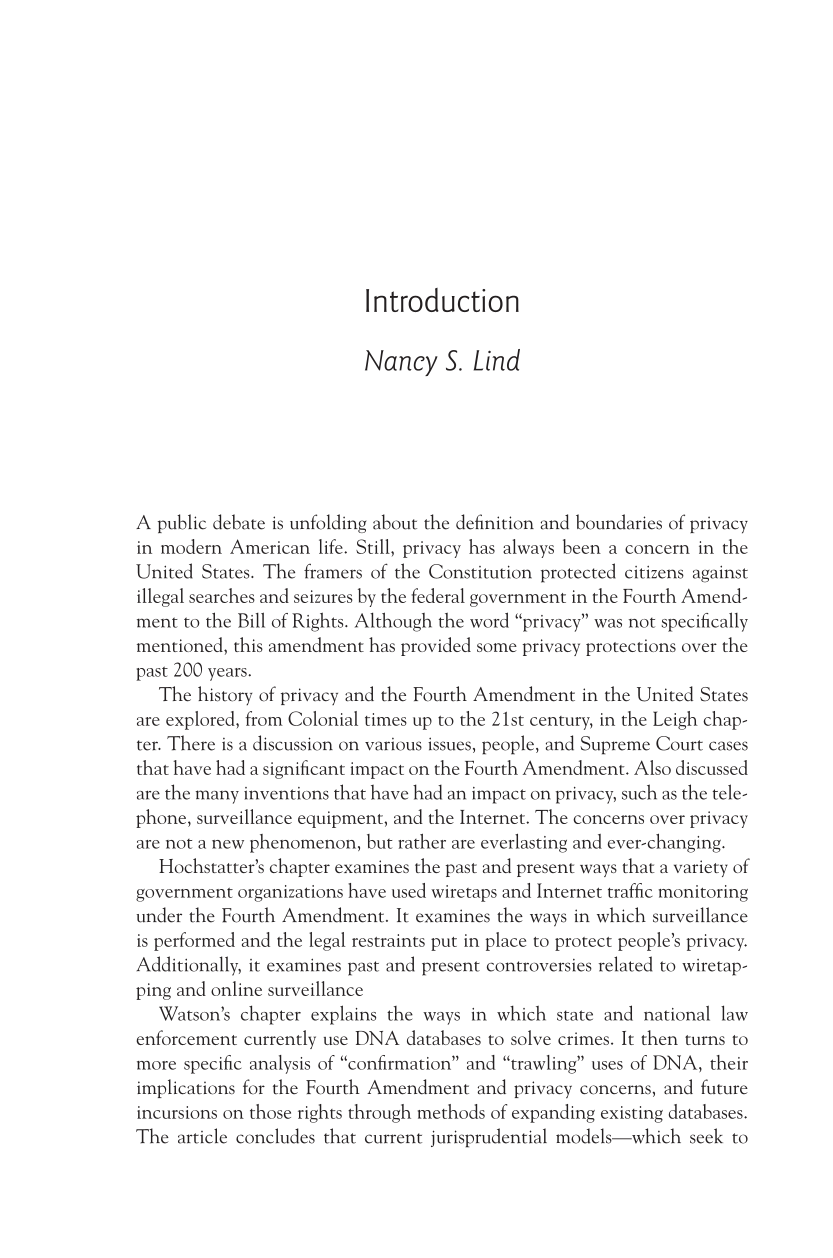Introduction
Nancy S. Lind
A public debate is unfolding about the definition and boundaries of privacy
in modern American life. Still, privacy has always been a concern in the
United States. The framers of the Constitution protected citizens against
illegal searches and seizures by the federal government in the Fourth Amend-
ment to the Bill of Rights. Although the word “privacy” was not specifically
mentioned, this amendment has provided some privacy protections over the
past 200 years.
The history of privacy and the Fourth Amendment in the United States
are explored, from Colonial times up to the 21st century, in the Leigh chap-
ter. There is a discussion on various issues, people, and Supreme Court cases
that have had a significant impact on the Fourth Amendment. Also discussed
are the many inventions that have had an impact on privacy, such as the tele-
phone, surveillance equipment, and the Internet. The concerns over privacy
are not a new phenomenon, but rather are everlasting and ever-changing.
Hochstatter’s chapter examines the past and present ways that a variety of
government organizations have used wiretaps and Internet traffic monitoring
under the Fourth Amendment. It examines the ways in which surveillance
is performed and the legal restraints put in place to protect people’s privacy.
Additionally, it examines past and present controversies related to wiretap-
ping and online surveillance
Watson’s chapter explains the ways in which state and national law
enforcement currently use DNA databases to solve crimes. It then turns to
more specific analysis of “confirmation” and “trawling” uses of DNA, their
implications for the Fourth Amendment and privacy concerns, and future
incursions on those rights through methods of expanding existing databases.
The article concludes that current jurisprudential models—which seek to














































































































































































































































































































































































































































































































































































































































































































